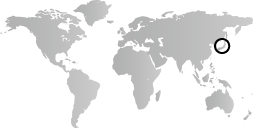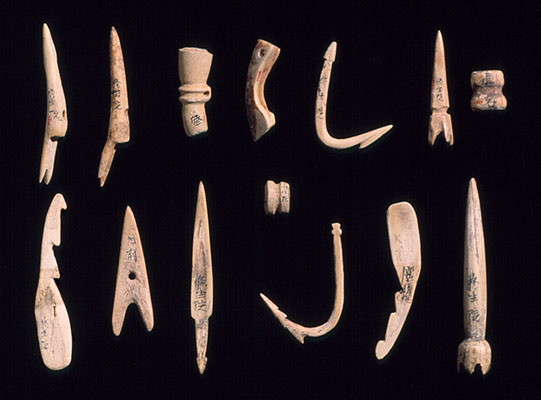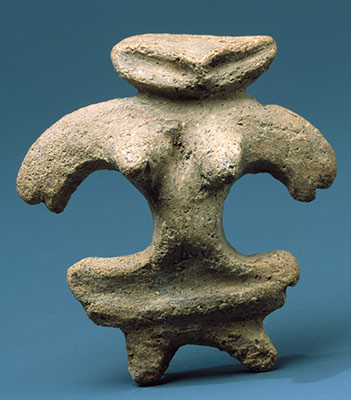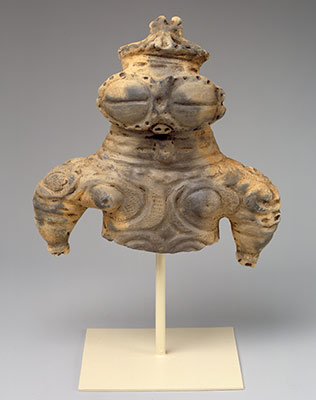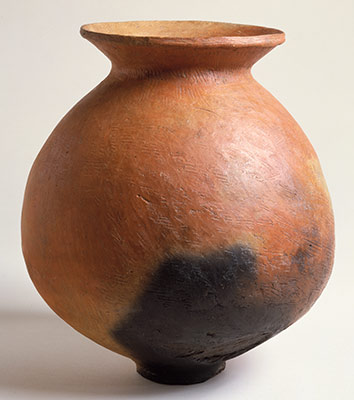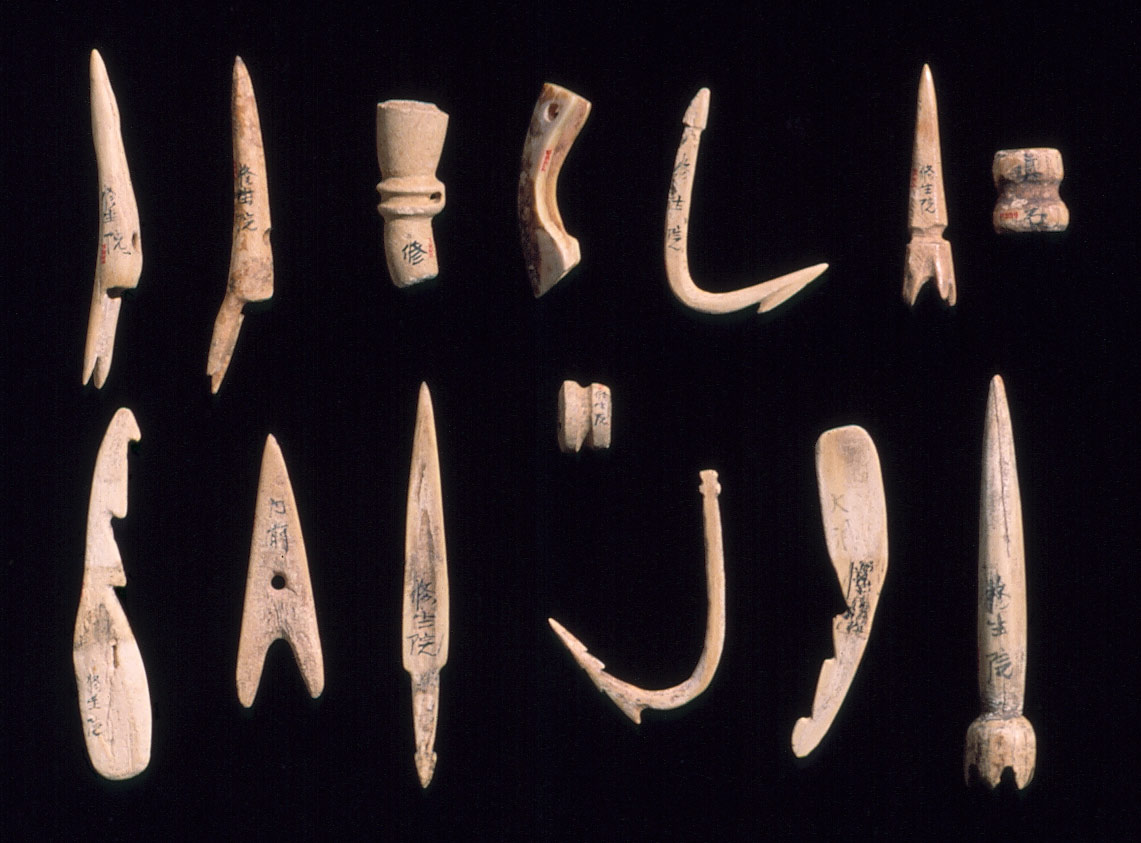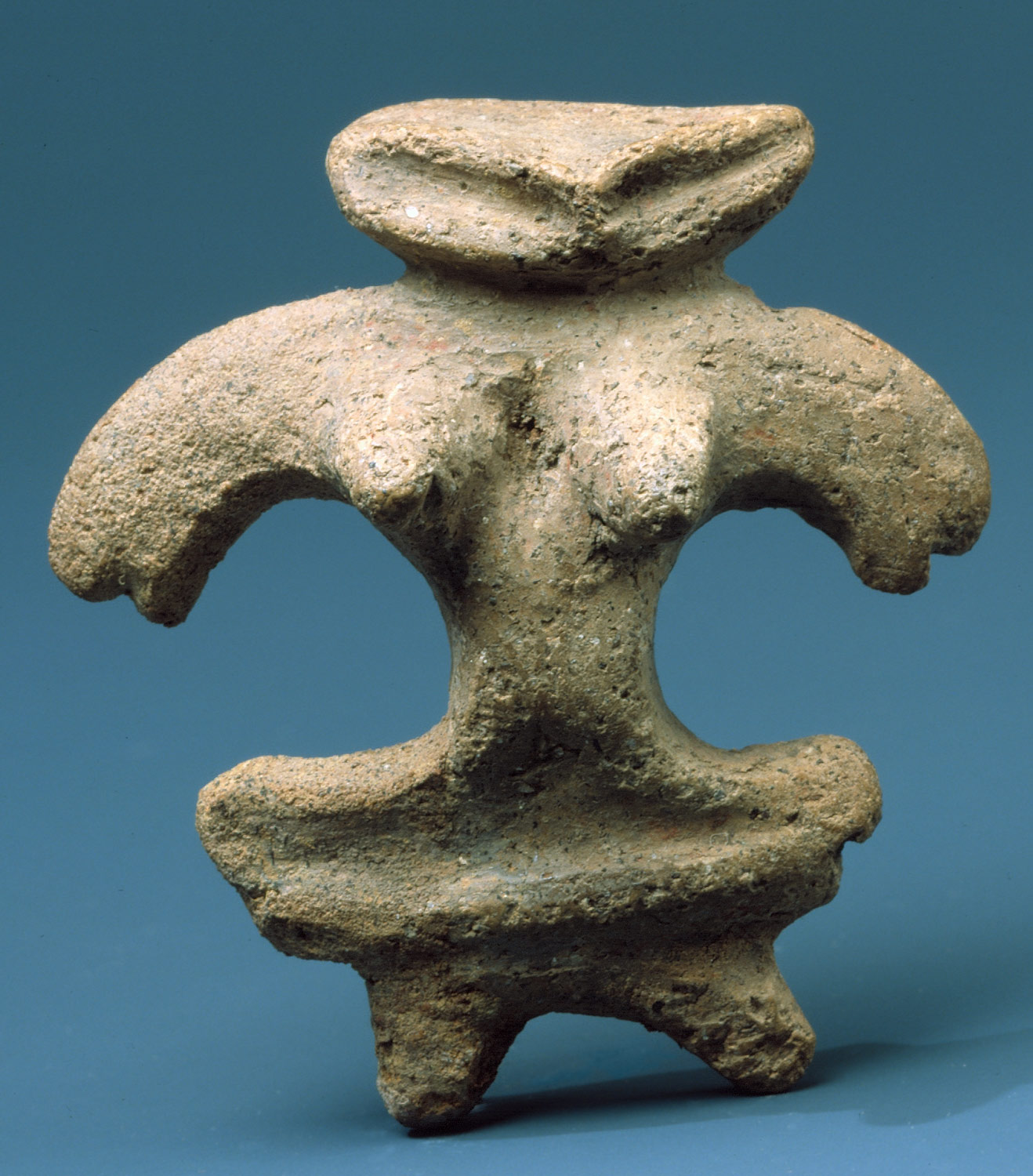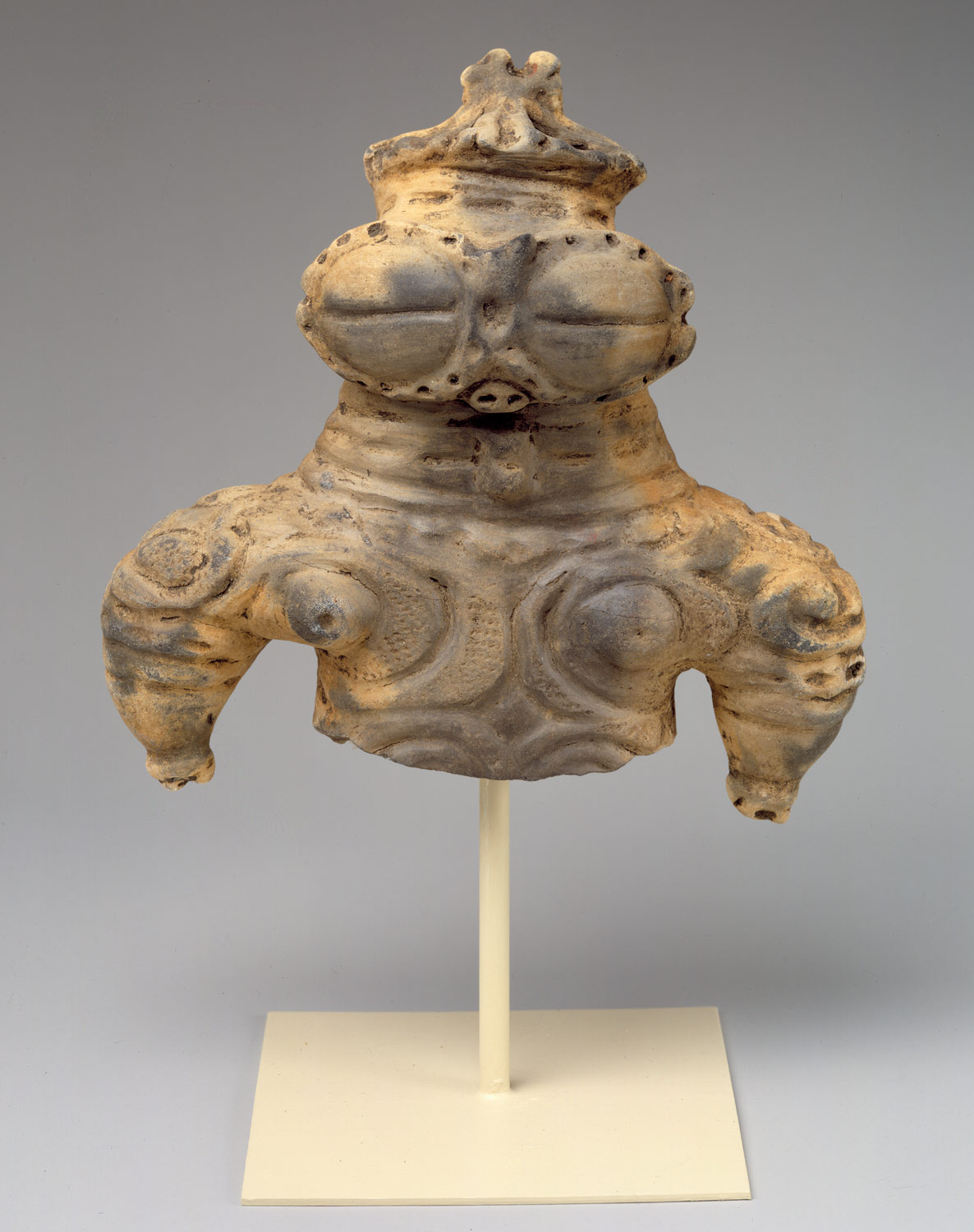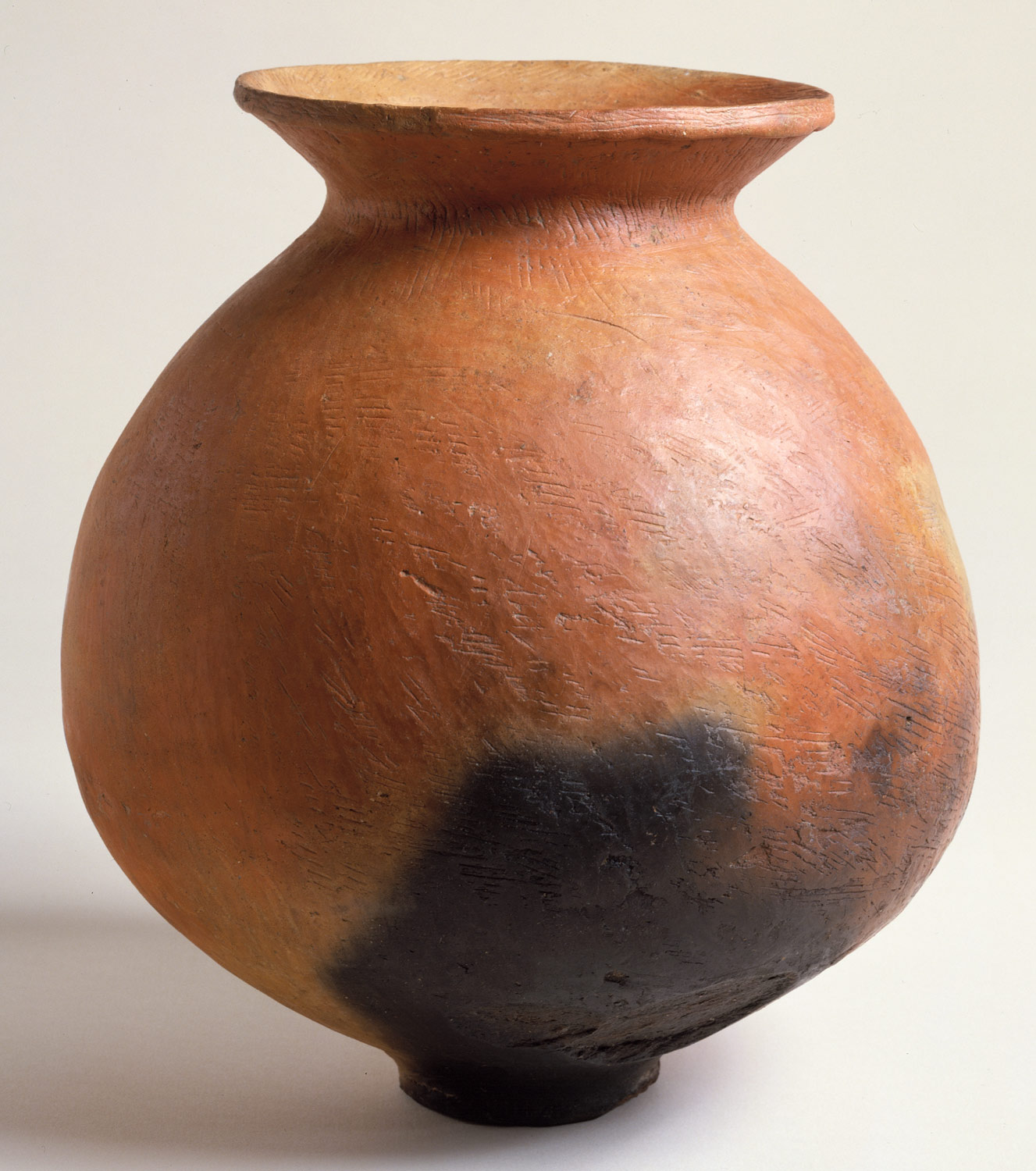From about the fourth century B.C., Jōmon culture is gradually superceded by the more advanced Yayoi culture. Stimulated by the arrival of agrarian peoples from continental Asia, the Yayoi culture first emerges in northern Kyūshū. It then spreads northward and flourishes until the third century A.D. The Yayoi people are primarily farmers who live in thatched huts clustered to form villages; they engage in wet-rice cultivation, the introduction of which is of momentous importance. Metallurgy is also introduced from the Asian continent during this time, making possible the production of iron and bronze objects. This is a period of increased affluence, and a class society begins to emerge.
Japan, 1000 B.C.–1 A.D.
Timeline
1000 B.C.
750 B.C.
750 B.C.
500 B.C.
500 B.C.
250 B.C.
250 B.C.
1 A.D.
Overview
Key Events
-
ca. 1000–300 B.C.
During the Final Jōmon period, Japanese craftsmen in northern Honshu use lacquer for coating pottery tableware to make them more durable and waterproof. Lacquer—which originates from the sap of a native tree—is colored with red, black, and brown pigments.
-
660 B.C.
According to legend conveyed in Japan’s earliest histories, Emperor Jimmu, a descendent of the sun goddess Amaterasu Ōmikami, consolidates his control over the country and ascends the throne, becoming Japan’s first emperor.
-
ca. 500–300 B.C.
Wet-rice agriculture, which revolutionizes food production in the region, is imported from the Asian continent and quickly spreads northeastward from Kyūshū. Although there is much dispute as to when wet-rice cultivation began in Japan and its exact route of importation, most recent evidence suggests this practice was brought from Korea during the Final Jōmon period.
-
ca. 300 B.C.
The more advanced Yayoi culture, the first fully agricultural society in Japan, begins to spread eastward and northward from western Japan, gradually replacing Jōmon culture. Although there is debate over whether the Yayoi culture resulted from immigration or evolved out of Jōmon culture, it is generally believed that the Yayoi people and their technologies, including metallurgy, spinning and weaving techniques, new burial customs, and the cultivation of rice, migrated to Japan from the Asian mainland in successive waves and then intermixed with and influenced the existing Jōmon peoples.
-
ca. 300–200 B.C.
Yayoi potters, presumably women using the coiling method, begin to fashion a wide range of cooking, storage, and serving vessels. In comparison with pottery of the Jōmon period, which influenced Yayoi ceramics in some regions, Yayoi wares tend to be made of finer clay, fired at higher temperatures and more carefully smoothed, and the potters tend to prefer complex forms over intricate surface designs.
-
ca. 300–100 B.C.
Bronze and iron weapons and implements are imported from the Asian mainland. By the later centuries of the Yayoi period, Japanese craftsmen are able to produce metal containers, weapons, tools, mirrors, and bronze bells for utilitarian or religious functions.
Citation
“Japan, 1000 B.C.–1 A.D.” In Heilbrunn Timeline of Art History. New York: The Metropolitan Museum of Art, 2000–. http://www.metmuseum.org/toah/ht/?period=04®ion=eaj (October 2000)
Related
Map
